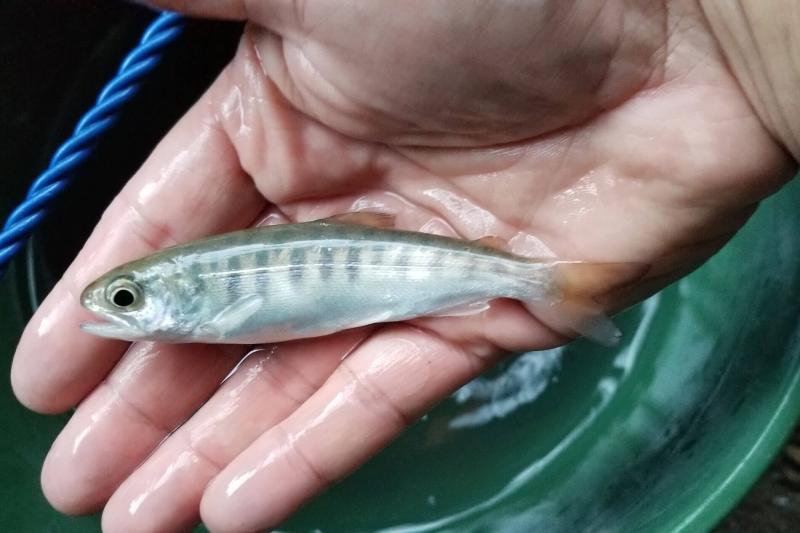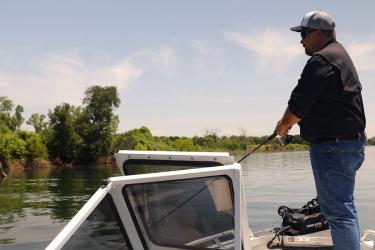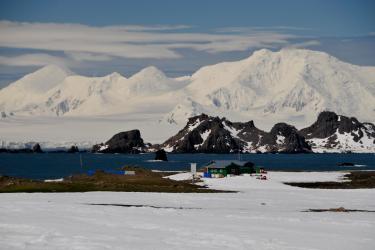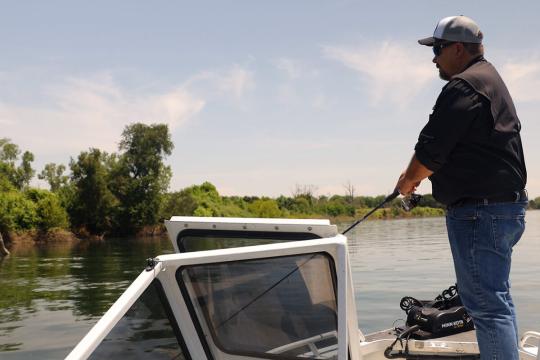Coho salmon once supported a wealth of tribal, commercial, and recreational fisheries along the West Coast. Today some populations of the swift silvery fish are nearing extinction. The good news? We can reverse that decline, as biologists and others demonstrate in a new video series that offers hope for California’s endangered fish and wildlife species.
The video series was produced in collaboration with state and federal fish and wildlife agencies with a community service payment made by a real estate development company. The company pleaded guilty in 2016 in a federal criminal case involving the endangered California tiger salamander. In a separate but related case, the owner of the development company agreed to protect a 107-acre ranch in Contra Costa County that provides habitat for endangered species.
The Saving Species Together video series and a supporting website highlight collaborative efforts to recover endangered species including:
- California tiger salamander
- San Joaquin kit fox
- Western snowy plover
- Southern Oregon/Northern California Coast coho salmon
“When we collaborate, we can make very real progress in protecting these species,” said Bob Pagliuco, a NOAA Fisheries habitat restoration specialist. He worked with Humboldt Redwood Company and Trout Unlimited to build an off-channel pond for juvenile coho in the Eel River Watershed. The coho salmon video tells how a supportive landowner helped return fish to their historic habitat. “The educational campaign launched by these videos is a way to help the public understand how habitat destruction affects species and how we can protect habitats to save these species.”
Fish Returning to Restored Habitat
The NOAA Restoration Center worked with NOAA Fisheries West Coast Region staff to design, permit, implement, and monitor the habitat project on Lawrence Creek in northern California. The project benefited Southern Oregon Northern California Coast coho salmon. Fish quickly started using the restored habitat and are increasing in abundance faster than coho in comparable habitat elsewhere in California.
Saving Species Together is a joint project among the California Department of Fish and Wildlife, the U.S. Fish and Wildlife Service, and NOAA Fisheries. It illustrates how fish and wildlife agencies, private landowners, non-profits, and citizens have teamed up to help some of California’s most vulnerable yet valuable species.
The National Fish and Wildlife Foundation received and administered the community service payment in accordance with the terms of the plea agreement as part of its Impact-Directed Environmental Accounts program. The program puts funding from legal and regulatory actions to work for species. According to Anne Butterfield, Senior Manager for the Foundation’s program, the videos will educate Californians about actions they can take to help threatened and endangered species and their habitats. The videos also illustrate their success.
Restitution Helps Highlight Threatened Fish
The website and videos are a counterpoint to and restitution for the original offenses that led to the community service payment. Investigators found that the president of an Alameda County company called Wildlife Management, LLC, had forged a receipt for habitat mitigation credits. Such credits are purchased by developers to offset their impacts on habitat needed by endangered species, in exchange for permits to pursue the projects. Charges against Wildlife Management, LLC, in this case included Endangered Species Act violations as well as fraud and forgery.
Threatened Southern Oregon/Northern California Coast coho depend on healthy and complex river and stream habitat. That means they need logs and other natural plant debris and rocks to hide among, shelter in, and rest from stream currents. Juvenile coho need this habitat in which to grow and gain strength before migrating to the ocean.
Private lands offer some of the best such fish habitat and opportunities to restore this habitat where it has been damaged from prior activities. Landowners, however, must be interested in carrying out such stewardship measures on their property.
“We’re telling a story of how we can restore habitat successfully, in a way that works for the species and for landowners,” Pagliuco said.
The project was funded by the National Fish and Wildlife Foundation with the community service payment paid by the defendant in the case captioned as United States of America v. Wildlife Management, LLC, in the Northern District of California.







